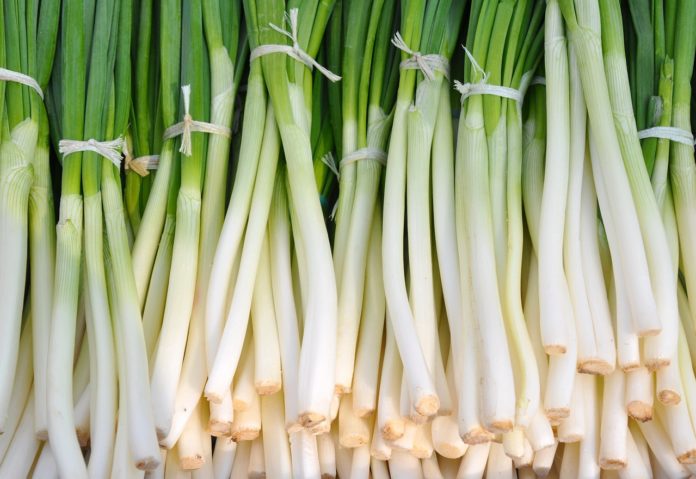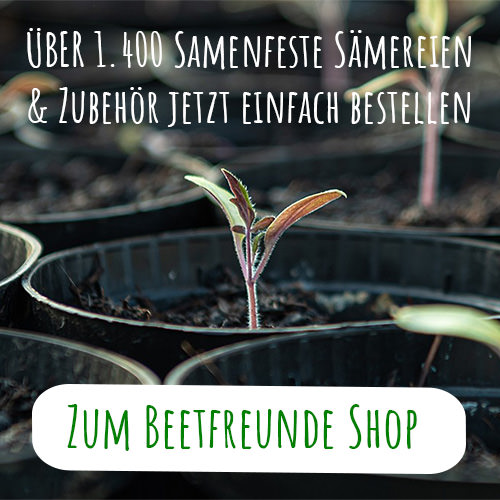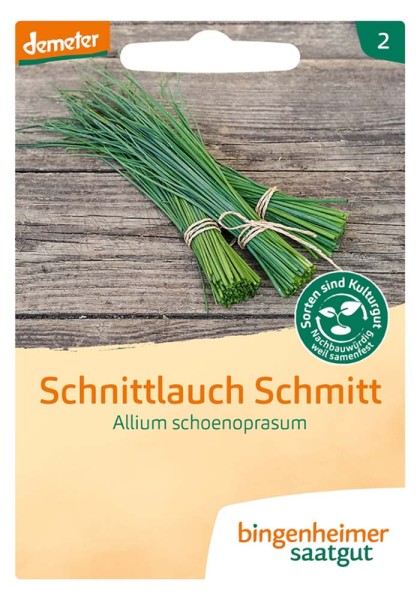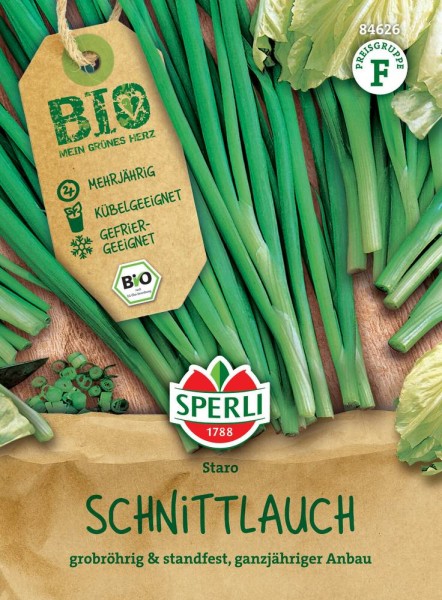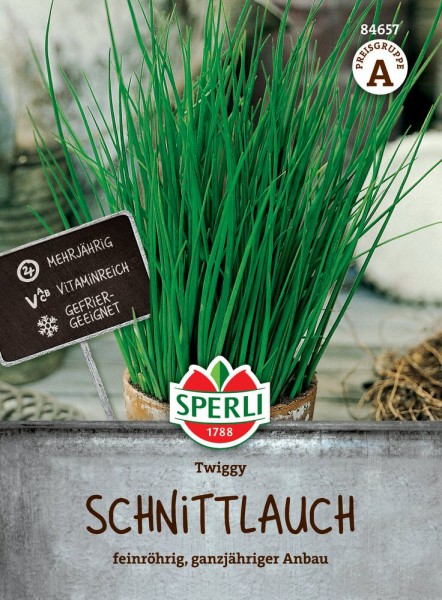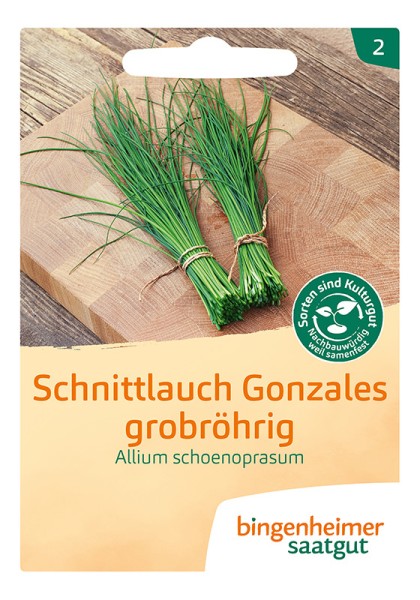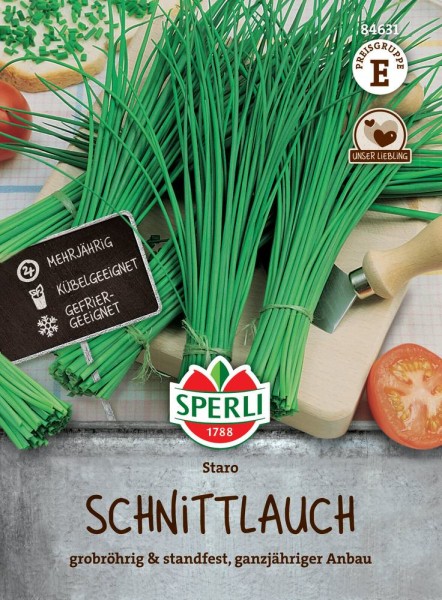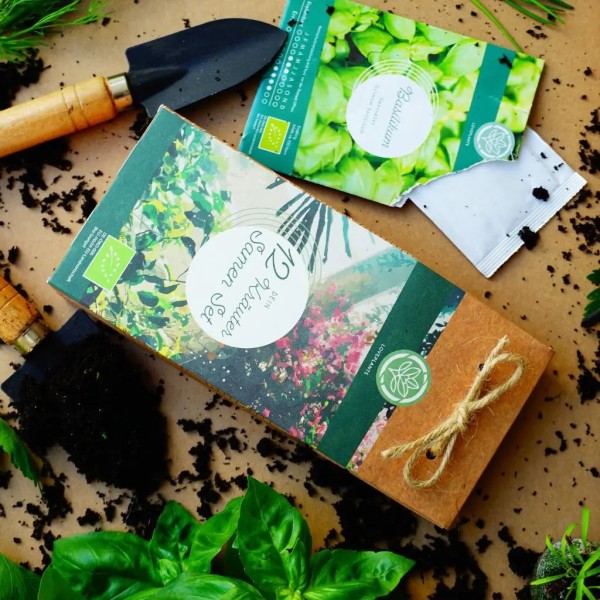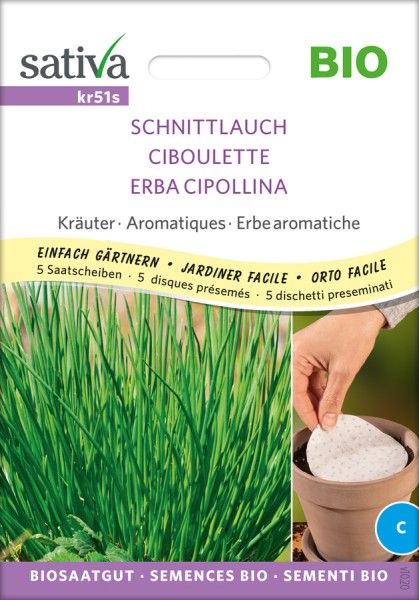Chives (Allium schoenoprasum) are, along with parsley (Petroselinum crispum), a classic among the aromatic herbs. They belong to the leek family, and you can use them in any dish that you want to round off with a light onion note. Finely chopped, the chive gives fresh quarks and dips, such as (Frankfurt) Green Sauce, a spicy, hot note. It tastes particularly delicious when served fresh on a sandwich or scattered over scrambled eggs. For cooked dishes, however, you should ideally add it just before serving, so that it retains as much of its aroma as possible.
Chive Varieties
As with many herbs, not all chives are the same. There are numerous varieties that grow at different heights and bloom very nicely in white, pink, or even violet. Characteristic of chives are their tubular leaves, which are hollow on the inside. These tubes can be used to categorize the varieties. There are chives with large, coarse tubes like Gonzales and Staro, medium fine tubes like Schmitt, and fine tubes like Twiggy. If the green leaves are not hollow, the plant is probably chives Allium tuberosum, also known as Chinese leek. You can use its leaves like chives, however, they taste like garlic.
Sowing and Thinning Chives
Chives like it outside when the spring sun has already warmed the soil a little. That’s why you sow it outdoors starting in April. If you don’t want to wait that long, you can also start them inside on the windowsill. You can start them as early as February. Put the seeds in pots with lean herb soil and cover them with two centimeters of soil. After about six to eight weeks, the young plants can be moved into the garden. Whether indoors or out, remember to water the seeds regularly so that they don’t dry out. If there are no or only a few seeds, there may be another cause; chive seeds lose their germination capacity very quickly. Often, considerably fewer plants develop than you plant, even though the seeds are only one year old. Our advice is to perform a seed test before sowing. This will determine whether you can still use the seed. If the germination capacity is less than 50 percent, you should purchase new seeds. Of course, you can still use up the old seeds. The plants that develop from it are not bad, i.e. inedible. Under certain circumstances, however, they no longer have all their characteristics, no longer grow as high, or are no longer as robust.
Grow More Chives by Dividing Them
If you already have chives in the garden or planter, you can also multiply them by dividing them in spring. To do this, cut the root ball into smaller tufts, replant them at a distance of about 20 centimeters apart, and cut the leaves to a few centimeters. Don’t forget to water well! Also, not only do you get several plants by division, you also rejuvenate them; they grow stronger after being divided.
The Right Care
Chives are a very hearty and robust herb. It needs hardly any care and sprouts again after each harvest. It loves permeable, nutrient-rich soil and grows best in a sunny to semi-shady location. You can also grow it in shady places, with a little luck. The amount of water it needs depends on where you plant it. If the plant gets too little water, the leaves dry out and become straw-like.
Chives don’t need much space. They can also be grown in pots or balcony boxes. In the garden, you don’t have to place chives in a separate herb bed. You can also use it as a border or in a flower bed. From June, the herb begins to bloom in white, or shades of pink, depending on the variety. The spherical flower balls not only look pretty in bouquets and attract bees; you can also eat them. Chives are a perennial and hardy plant. As soon as it gets warmer, they sprouts on their own.
Harvest & Preservation
You can usually harvest fresh greens from spring to autumn, as soon as the stems are at least 15 centimeters long. Cut the shoots about two centimeters above the ground, preferably with a sharp knife or scissors. Ideally, you should use the finely chopped leaves fresh. They lose their aroma and ingredients if frozen or dried. And that would be a shame, because chives are particularly rich in vitamin C!
Our tip: grow the herb on the windowsill throughout the winter. In late autumn, cut a strong root ball, plant the tufts in flowerpots, and place them on a warm windowsill. At about 20 degrees, the small plants quickly sprout fresh greenery. Medium and coarse tube varieties are best suited for this. The disadvantage is that in spring, the plants are often too depleted to plant them back into the bed and must be discarded.

